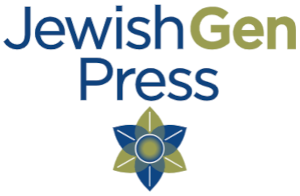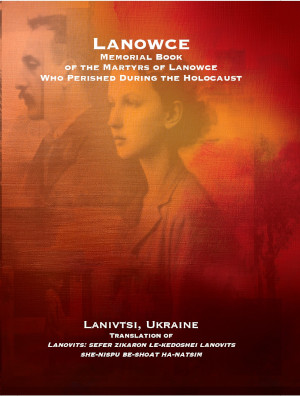

(Lanivtsi, Ukraine)
Translation of
Lanovits: sefer zikaron le-kedoshei lanovits she-nispu be-shoat ha-natsim
Published by the JewishGen Press
Original Yizkor Book Edited By: H. Rabin
Available from
for $36.00
Project Coordinator: Sol Sylvan z”l
Cover Design: Rachel Kolokoff Hopper
Layout and formatting: Jonathan Wind
Indexing: Stefanie Holzman
Book Summary: Bruce Drake
Hard Cover 8.5” x 11”, 346 pages with original photographs
 |
Details:
Lanowce in western Ukraine had been part of the Russian empire from 1795 until the end of World War I in 1918. In the Russian census of 1897, there were 1,174 Jews out of a total population of 2,525. When national boundaries changed after the war, it became part of the Second Republic of Poland which lasted until it was annexed by the Soviet Union in 1939 and then occupied by the Nazis in 1941. Ukraine returned to Soviet rule after the war until it became independent in 1991.
This book is rich in details about many aspects of life ranging from the town's landmarks and appearance, accounts of key historical moments, the social and class structure, the generational tensions between young and old, lists of people who lived and died there and the hardships they suffered during the upheavals of war.
The great synagogue, located on a hillside, was the distinguishing feature of Lanowce, which visitors saw as they approached the town. The synagogue was architecturally striking, built with reddish bricks. Dozens of windows filled the interior with light. The women's section was ten meters above the men's section and appeared hung in mid-air on the base of carved wooden posts.
In the 20th century, rifts grew between the young and old. The new generation was interested in secular issues, new ideas about education, literature and Zionism. Orthodox fathers fought against this and called these youths Sheketzim [heretics]. The local youth fought their elders stubbornly. Their arguments, which formerly took place in the Beit Midrash now gravitated to within the local youth groups.
The book also has a detailed analysis of the town's class structure. The most respected were those who had been learned and wealthy for generations. The next social layer consisted of tradesmen and retailers followed by local artisans whose economic status was often precarious. The town's living standard was low, including for those who made a good living. Everyone was intent on saving money for either a dowry or to pay for future illness.
The advent of World War II brought two shocks to the community. The first came when the Soviet Union annexed the country in 1939. Fearing their new Communist rulers, Jews started to search for their proletariat ancestry. Retailers, who formerly struggled to make a living, began to fear that they will be looked upon as capitalists, and be sent to Siberia. Businesses were nationalized. Later as it became clear the Germans would drive out the Soviets, Jews who worked for them joined their evacuation to Russia, detailed in a section titled “In the Soviet Diaspora.”
The second blow was the arrival of the Germans in 1941. They initially left much of the dirty work to the Ukrainians. All commerce between Jews and Gentiles ceased. Jews were subjected to forced labor. Two days before Purim 1942 all of the Jews of Lanovits were herded into the Ghetto. It was liquidated a few months later. The men, women and children were lined up near pits and shot.
The book contains an alphabetical list of those who perished and a list of homeowners and their house numbers just before the Germans occupied the town in 1941. The house numbers are cross-referenced in a map in the photo section.
May this book serve as a memorial to those who lived, worked, dreamed and perished in Lanovits.
Lanivtsi [Ukr], Łanowce [Pol], Lanovits [Yid], Lanovtsy [Rus], Lanowitz [Ger], Łanowice, Lanovitz, Lanovtse, Lanavtse, Lanivtsy
Lanivtsi, Ukraine is located at 49°52' N 26°05' E 200 miles WSW of Kyyiv
|
 JewishGen Press
JewishGen Press
 JewishGen Home Page
JewishGen Home Page
Copyright © 1999-2025 by JewishGen, Inc.
Updated 3 Oct 2025 by LA